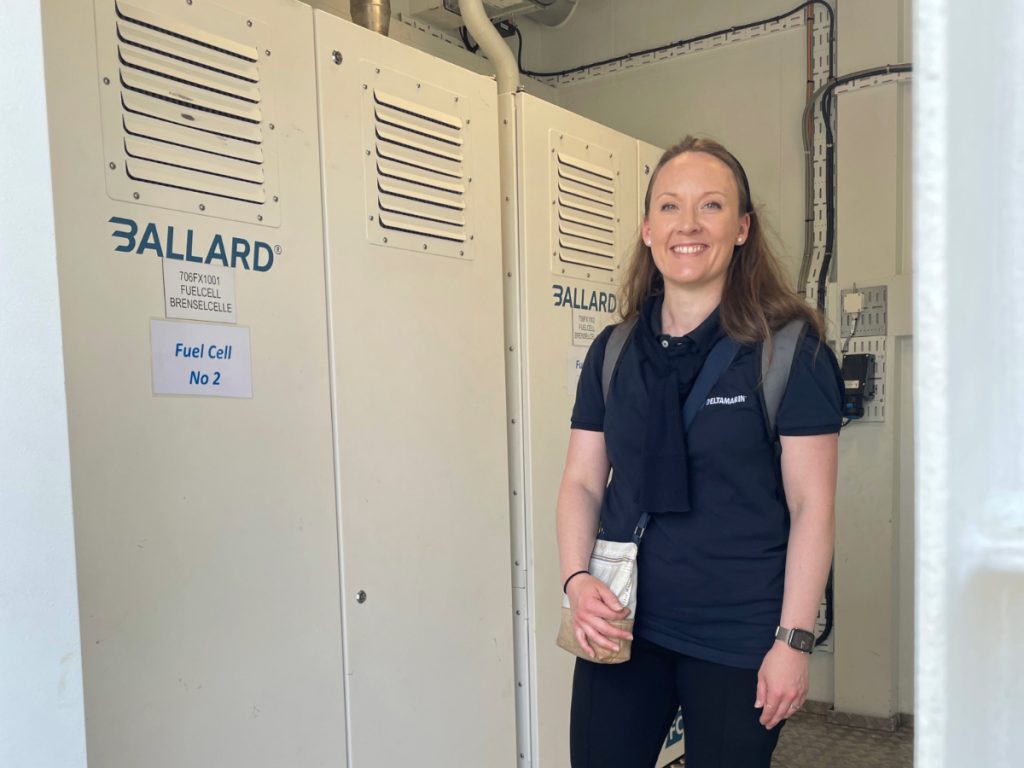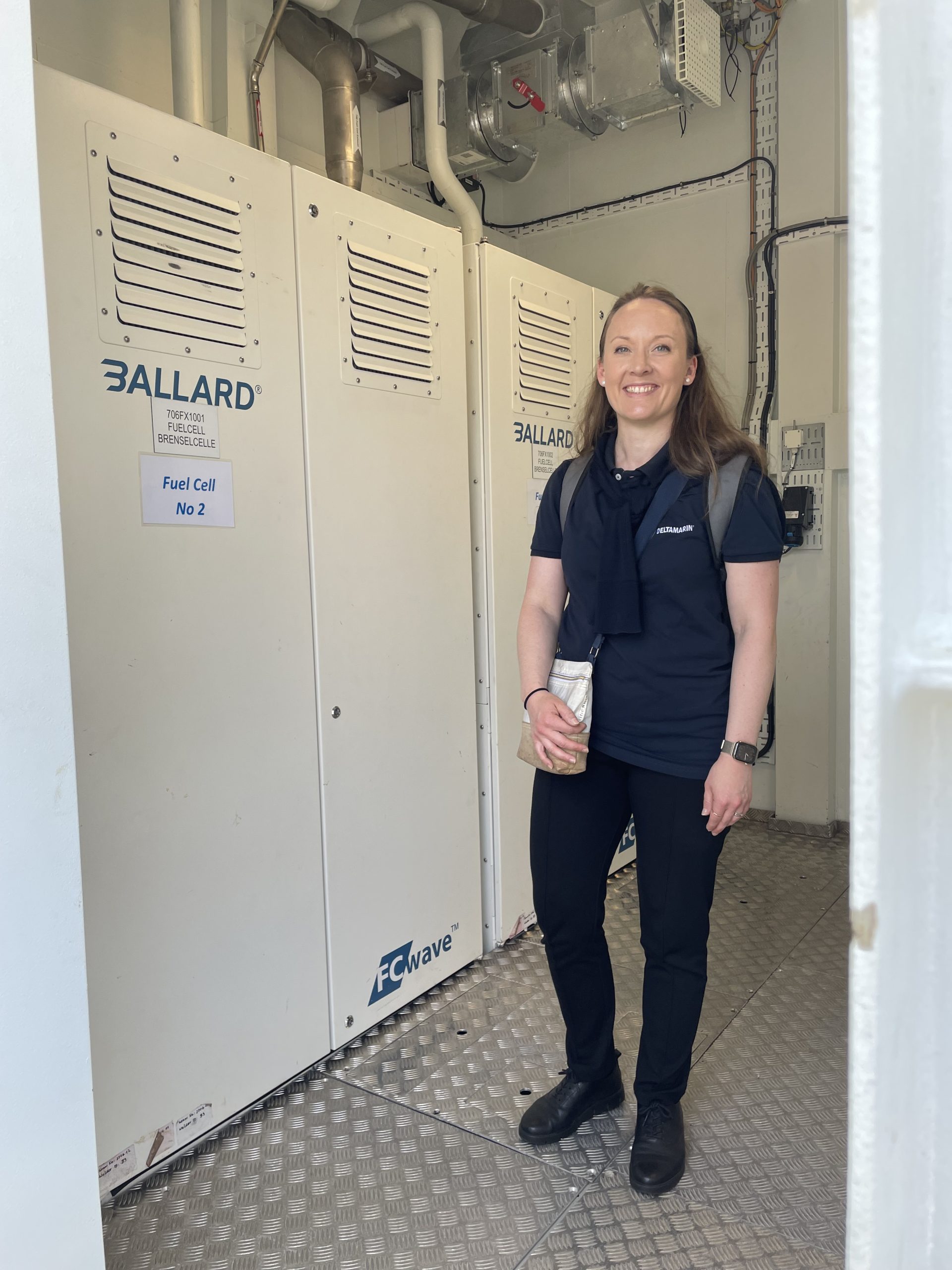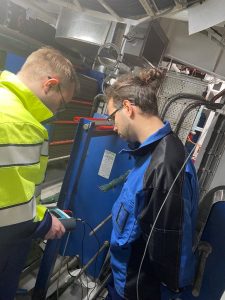Mia’s blog series for 2024: Hidden pieces of shipping decarbonization

The current rules regarding maritime GHG emission reductions and, for example, the EU green deal are pushing further maritime industry decarbonization in practice. Shipping decarbonization consists of a combination of operational and technical means of energy saving, exhaust gas after treatment such as carbon capture and, of course, clean fuels.
Low-carbon fuel utilization alone can take us to our target but, since money typically steers our world and our resources are limited, the entire “decarbonization mix” is needed!
I decided to write a blog series this year that is dedicated to the complexity of shipping decarbonization and news from the forefront of ship design development. Since, for any ship, the various methods of decarbonization will eventually become a reality, my intention is to highlight useful and even necessary aspects that might otherwise be hidden behind the headlines.
In case you did not know, my background is in thermodynamics and I literally ‘burn’ to solve ship heat system-related issues, so I’m starting my blog series with some hot stuff..!

Blog 1: Hot maritime topics
Embracing decarbonization and its inherent complexity
GHG reduction needs are changing current and future ship machinery in multiple ways. Various energy-saving methods result in lower ship engine loads in operation and perhaps larger variation in overall power requirements. Alternative fuels set new requirements for engines. Also, we will see more fuel cells as part of the ship machinery mix.
In addition to the above, electrification is already an important way to reduce ship emissions, and this trend is set to increase in the future, for sure. For instance, plugging ships into shore power will be a requirement for certain ships in the future, at least within the EU. Nevertheless, already today and maybe more so in the future when utilizing green synthetic fuels, the reasons for electrification might also be strongly economic.
If not going directly for “clean fuels” on a well-to-wake basis, carbon capture from a share of ship emissions could provide at least an intermediate solution for shipping decarbonization. We concluded in our first carbon capture study for a RoPAX ship that it could be possible to reach a pay-back time for this type of technology with quite a modest carbon tax level.
To conclude, the common trend is for ship machinery to become way more complex than it used to be, let’s say 10 years ago. This complexity is not only limited to the constant need to learn more about new main machinery equipment and fuel qualities. It is also caused by radical changes in ship machinery resulting in radical change in the system balance, involving many interrelations.
Heat can be big!!
To put a bit of meat on the bones, let’s look at ship energy flows. Deltamarin’s energy team models ship energy and fuel performance en route and often also illustrates the main energy streams in form of a Sankey diagram. The figure below represents typical fuel energy distribution within a diesel-fueled cruise ship including diesel-electric machinery with an oil-fired boiler to produce additional heat for the ship. The figure illustrates how the fuel chemical energy is converted in the ship machinery into electricity and heat for the ship’s main energy consumers.

If you look closely at the diagram, you might notice that heat consumption represents a visible and considerable part of the ship’s total energy consumption. In fact, I have sometimes estimated that, in a cruise ship, heat consumption might represent over 20% of the ship’s total energy consumption but, even so, the focus has not been strong in ship heat consumption processes. The main reason for this is natural: waste heat from the ship’s engines satisfies most of the heating requirements. This can be also seen in the diagram. Consequently, a ship’s additional heat generation typically represents only a few percent of its total fuel consumption. Nevertheless, when we develop the new kinds of machinery that I touched upon at the beginning, this system and balance will change.
Feeling the heat
What happens when a ship is connected to shore power and the engines are turned off? The immediate consequence is that we lose all waste heat production and the ship’s auxiliary boilers are started. So, plugging into shore power does not alone guarantee that a ship is zero-emission in port. Direct electrical heating of ship consumers could be a solution to minimizing emissions when connected to shore power, but it is hardly practical as the shore electricity requirements could be in some cases doubled, not to mention the investment required by equipment upgrades.
But it’s not only in port that we observe an increase in boiler emissions without a proper focus in heat flows. As mentioned at the beginning, carbon capture is an alternative for ships seeking to reduce carbon emissions. In a recent study, chemical absorption was considered to have the highest maturity of the various available technologies and we have also been studying this in several projects in recent years. Separating CO2 from ship exhaust gases with a chemical absorption-based process is quite energy intensive, and heat consumption represents a large share of the energy requirement. If additional heat must be produced onboard, ship fuel consumption is increased and the net carbon capture rate is reduced.
Nevertheless, it’s not all bad regarding the big solutions of decarbonization and heat: new fuels and technologies also provide certain opportunities regarding heat recovery, which we have witnessed in our projects. Clean fuels without sulfur in exhaust gases enable the recovery of more heat in the exhaust stack compared to heavy fuel oil, for instance. Also, many machinery heat consumers today exist due to heating requiring heavy fuel oil, and typically heating media temperature requirements are set by fuel heating.
Seeing the light
After a quick review of the impact that new technologies may have on heat systems, I will now focus on outlining some “new generation ship heat system principles”. These principles enable mitigating some of the biggest problems mentioned earlier, and also enable taking out most of a ship’s fuel-saving possibilities.
Firstly, on the energy flow level illustrated with the Sankey diagram, any joule of energy is equal, be it heat or electricity. Especially if there is a risk of having to utilize electrical heating, this is the last moment to start focusing on energy saving in heat processes. But that’s not all. From a thermodynamic perspective, we should try to match the onboard heat consumption with as low a temperature heat source as possible. Without going into the second law of thermodynamics, this action not only releases high-value heat for efficient heat recovery, but also enables us to better utilize the low temperature waste heat sources onboard. In my view, we are used to serving much ship heat consumption with unnecessarily hot temperatures onboard.
Reducing heat consumption temperatures is also key to unlocking certain radical improvement potential in scenarios where a ship is on shore power. For instance, heat pumps could be utilized to produce heat in port. Heat pumps require electricity but considerably less than direct electrical heating, so zero emissions in port could be reached at lower cost. Furthermore, heat pump efficiency is dependent on the heat production temperature. Even though high temperature heat pumps exist and are being further developed, from an economic perspective it is sensible to aim to keep temperatures low. Heat pumps could also be applied to improve the energy balance in the case of carbon capture applications, which we have recently explored.
But it’s not only heat pumps that benefit from the “low-temperature heat for low-temperature consumption” principle. Heat storages are also a viable solution to certain ship types and ship operation, for lowering additional heat production needs. The currently existing solutions that you may find onboard our local RoPAX ships here in Finland are simply hot water tanks. High-temperature heat is utilized to heat the tanks and the heat consumption temperatures dictate how much usable heat can be stored. There is also new development ongoing in phase-change materials, enabling better weight and volumetric efficiency for heat storing, so we have not seen the end of this technology.
As the “low-temperature principle” also unlocks recovery and utilization of lower-temperature waste heat from a ship’s operating machinery, we have more opportunities for efficient waste heat recovery of high-temperature heat. There we have several options such as Organic Rankine Cycles, steam turbines for electricity production onboard or absorption coolers for producing chilled power for air conditioning.
Finally
I hope that this small and slightly turbocharged piece of text has provided some new perspectives and helped to structure the rather complex topic. My own summary and conclusions of the topic are as follows:
- Good design in heat systems can lead to less need for shore power utilization and also less fuel consumption at sea with efficient heat recovery
- On the other hand, neglecting these can lead to surprising energy consumption onboard as a side-effect of commendable attempts to decarbonize another process
- Heat storages, heat pumps and all kind of heat recovery equipment can be very powerful, but heat integration work and its related analysis must be properly conducted to maximize the benefits
- Everything starts from understanding the magnitude of heat flow available for recovery and consumption
Ultimately, everything is connected: ship operation, available equipment and available fuels and other energy sources. In our current projects, we are now working to create architectures that enable these efficient heat principles to become reality. In the world of ship heat systems, all you need is the principles of thermodynamics, a good old set of engineering skills, an adventurous mind and, perhaps, an ultrasound flow measurement device.

If you’d like to exchange more thoughts around this topic, feel free to reach out to me!
Want to read more? See also our other published blogs.
For more information, please contact
